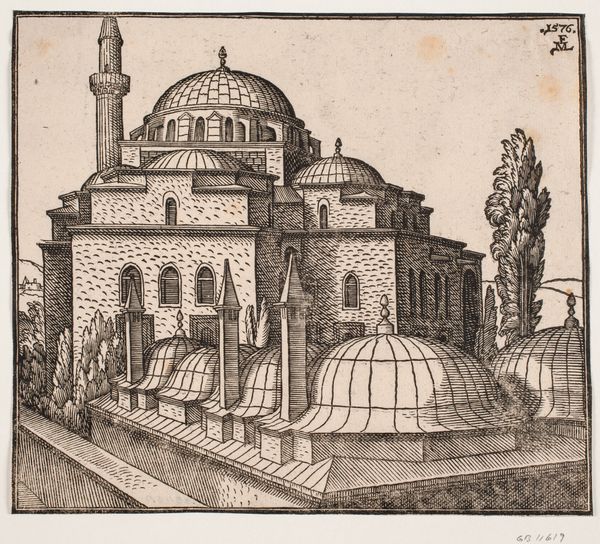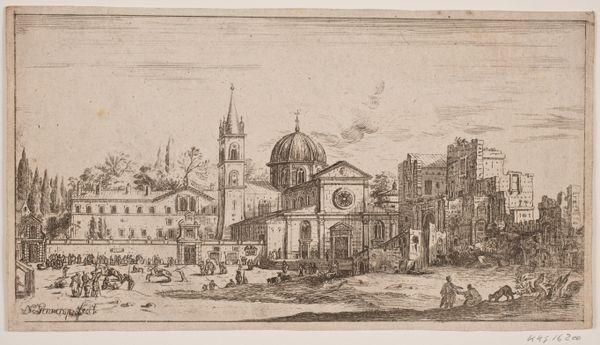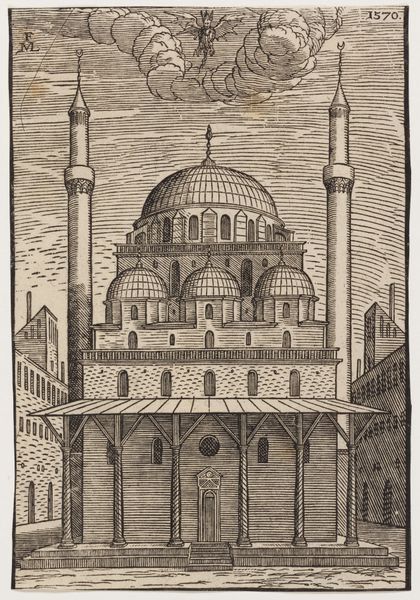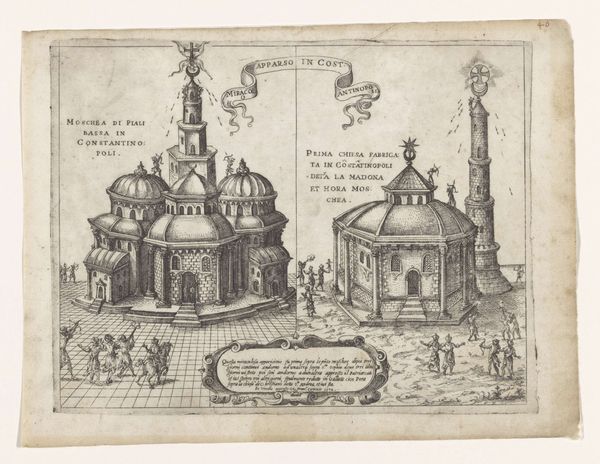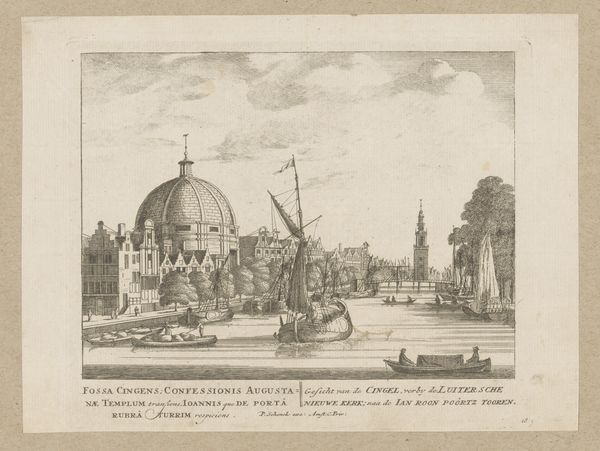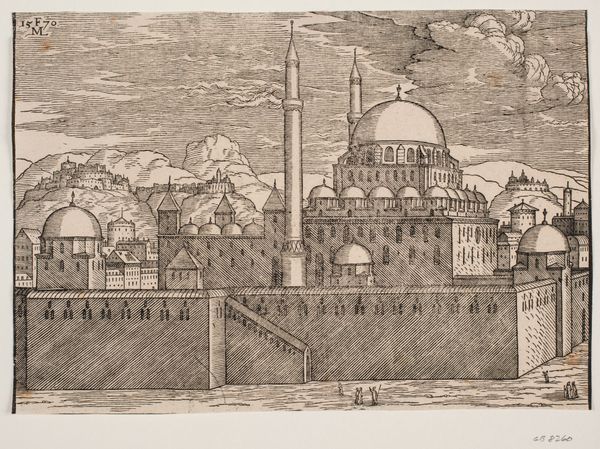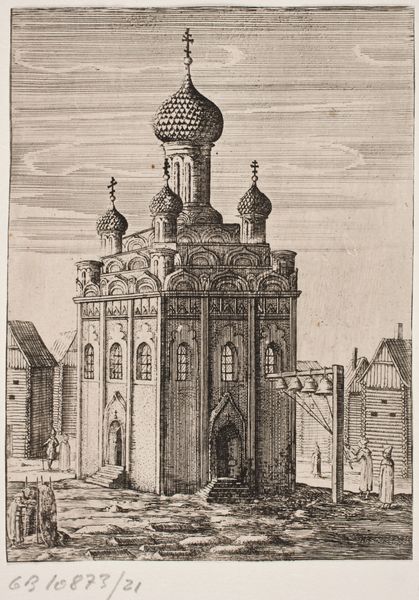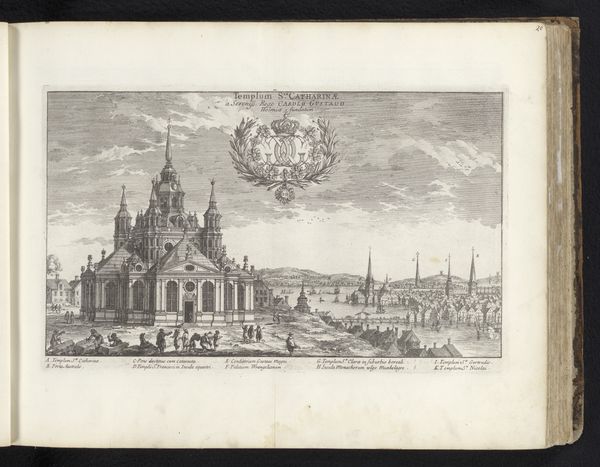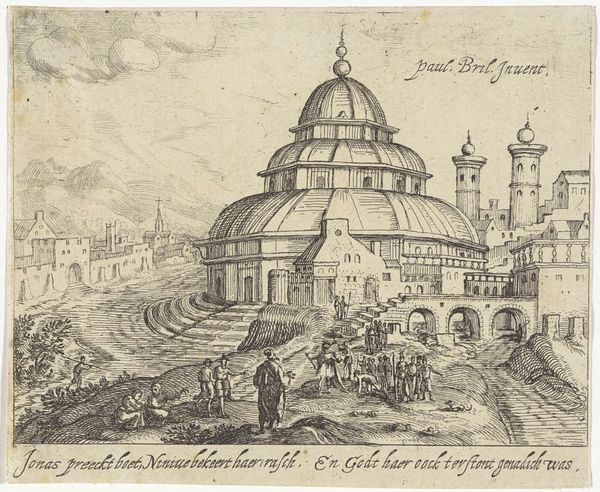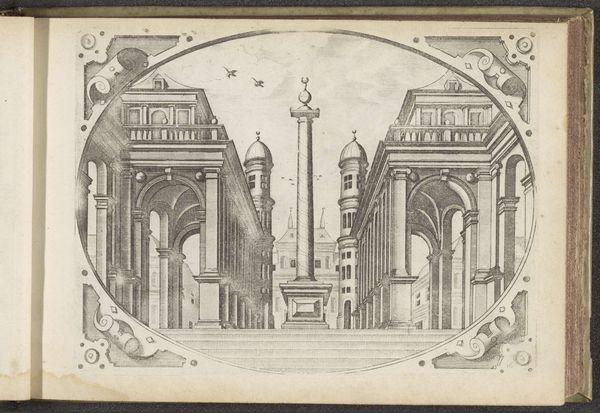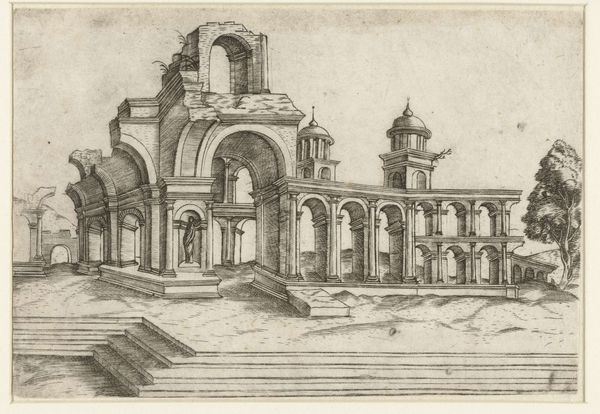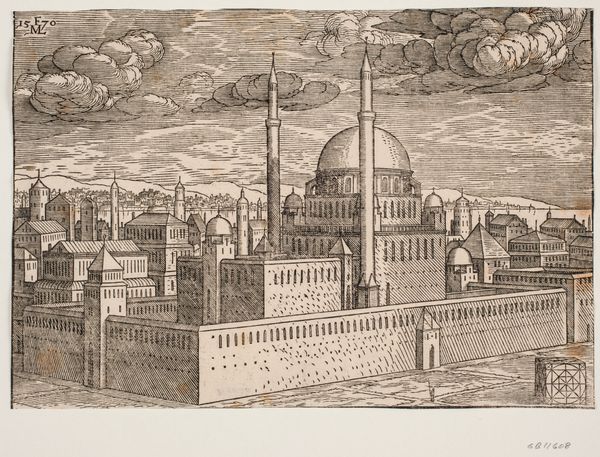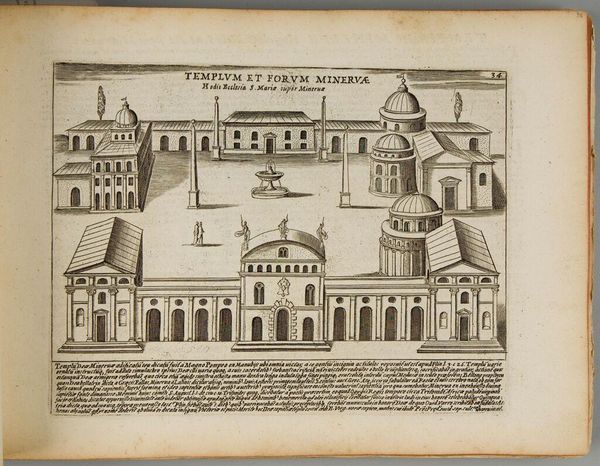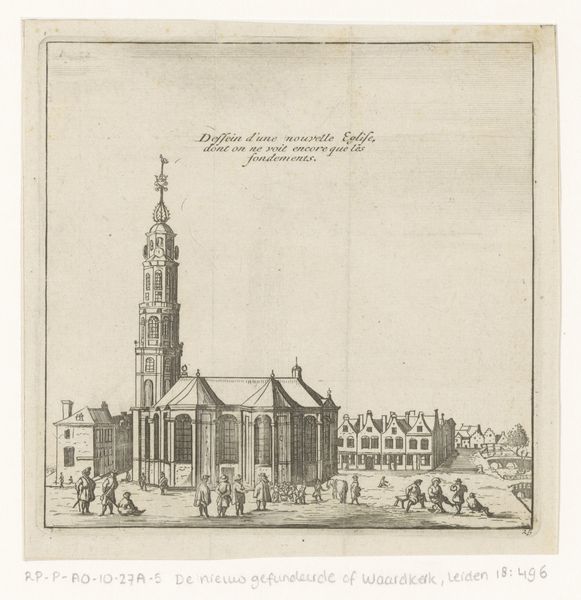
L'Eglise Saincte Sophie de Constantinople, bastie par Constantin le Grand; a present Mosquée du Grand seigneur 1640 - 1660
0:00
0:00
print, engraving, architecture
# print
#
line
#
cityscape
#
islamic-art
#
engraving
#
architecture
Dimensions: plate: 12.6 × 25.6 cm (4 15/16 × 10 1/16 in.) sheet: 21.1 × 33 cm (8 5/16 × 13 in.)
Copyright: National Gallery of Art: CC0 1.0
Editor: This print, entitled "L'Eglise Saincte Sophie de Constantinople, bastie par Constantin le Grand; a present Mosquée du Grand seigneur," made by Israel Silvestre between 1640 and 1660, showcases a detailed rendering of Hagia Sophia. The architectural grandeur is striking, but also gives a strong sense of place, as there are many different social activities depicted in the image. What is particularly noteworthy about this piece from a historical perspective? Curator: Well, it’s important to recognize this not just as a cityscape, but as a politically charged image. Silvestre is documenting Hagia Sophia at a crucial moment. Formerly a church, as alluded to in the title mentioning Constantine, it was converted into a mosque following the Ottoman conquest of Constantinople. Editor: So, the print is not just about the building itself, but also the shift in power. Curator: Precisely. Think about the intended audience for this print – most likely Europeans. It visually represents the "other," the Islamic power that now controls this historically Christian space. It raises questions: what does it mean for Christian identity, and how is this shift represented visually to a European public? Are you able to tell, from the architecture itself, of that earlier time? Editor: I see how the architecture is presented; the Byzantine elements remain quite visible. Are we to think that Silvestre is using the architecture to call back the history? Curator: Perhaps, but the presence of the minarets assert the new Islamic order. Silvestre might be subtly pointing to both the loss of Christian control *and* the imposing presence of Ottoman power. Considering this print's function within a market driven by European interest in the "exotic," do you think it confirms or challenges Orientalist views? Editor: It both confirms and complicates them, I think. The detail lends credibility, but also acknowledges the layered history of the site. Seeing how historical forces shape the image like this gives a depth I didn’t expect. Curator: Exactly. Looking closely, one can see art as embedded in power dynamics. That's something that always challenges my views, even today.
Comments
No comments
Be the first to comment and join the conversation on the ultimate creative platform.
